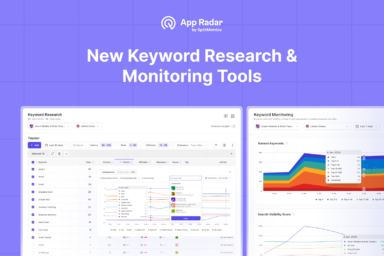Uncover your App’s Organic Visibility with the new Search Visibility Score
Most App Store Optimization (ASO) experts will tell you how painful it is to measure the actual impact of ASO. With our latest feature release, we want to support all ASO experts struggling to see the result of their ASO efforts. We are happy to present you our new organic search visibility score in App Radar that will help you find the answer to the following questions:

- How much app visibility do you get through organic user acquisition compared to competitors?
- Did your app localization efforts pay off?
- Was your ASO update a success?
What is the Search Visibility Score?
The organic search visibility score helps you see the effects of your ASO efforts per country. You can use it to get an overview of your app’s performance in the organic search results. It is based on a combination of your keyword rankings and the search volume of those keywords. In the next step, a score gets calculated and compared with the score of competitors.
It is essential to understand that the visibility of an app in app stores depends on keyword rankings and search volume. An app that ranks high (top 10 and above) on keywords with high search volume will have a higher search visibility score.
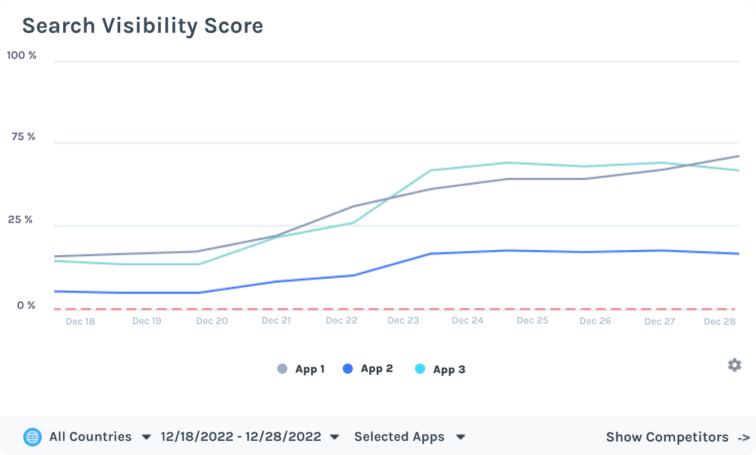
How to solve the mystery of organic app visibility
ASO experts often need help arguing that all the hard work they put into optimizing the store listing pays off. The many impact factors that come into play do not make the analysis and argumentation easier. One of the main goals of ASO is to improve the app’s visibility in the app store search results. But how can you prove that an increase or decrease in app visibility is due to ASO? Here comes the new App Radar search visibility score! Let’s look into how it can help you with your analysis step by step.
Was your ASO update a success, or should you revert the change?
The best way to evaluate if the metadata changes had a positive impact is to look at the following:
- Keyword Rankings: did keyword ranking increase since you made the metadata changes?
- Search Visibility Score: did your search visibility score increase since you made the metadata changes? Did you get more visibility in the stores?
- App Store Traffic: did search traffic increase since you made the metadata changes?
Remember that various impact factors can play a role:
- Ratings
- Creatives
- App stability (e.g., crash crate)
- Competitor activities
- Paid UA
- Featurings
For example, a higher crash rate will also harm your performance and limit traffic.
ASO is an ongoing process, not a one-time event. You will see the best results if you do updates regularly. So don’t worry if you don’t see the results you want after the first few times. Keep at it, and you will eventually see the success you are aiming for.
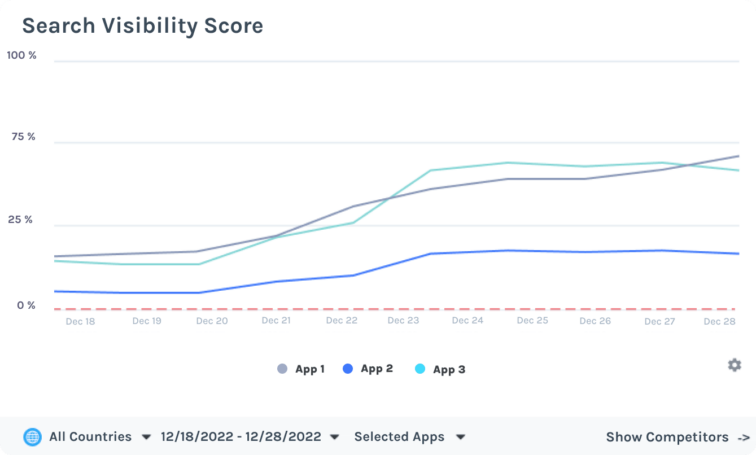
Did your app localization efforts pay off?
The search visibility score reflects the local visibility level on a country level. It is especially vital when you have recently started with app localization for a specific country. By looking at the search visibility score, you’ll see how your localization efforts impacted your organic visibility scores and whether or not it has succeeded. If you know the score is going up, it will be a sign that you did an excellent job with app localization. In other words, the search visibility score will yet be another metric to look at when analyzing the results of your localization efforts.
How much visibility do you get through organic UA compared to competitors?
When you want to be successful in the market, there is no way around you don’t keep an eye on your competitors. You need to understand their app marketing strategies, evaluate their strengths and weaknesses and see how their visibility evolves.
The search visibility score helps you check your own app’s visibility and the ones of your competitors.
If you are wondering why your app visibility is not growing, even though you invested a lot of time into optimizing your store listing, a competitor could be the reason. If you see that one of your competitors has a strong increase in organic app visibility, it could be that they outperformed you.
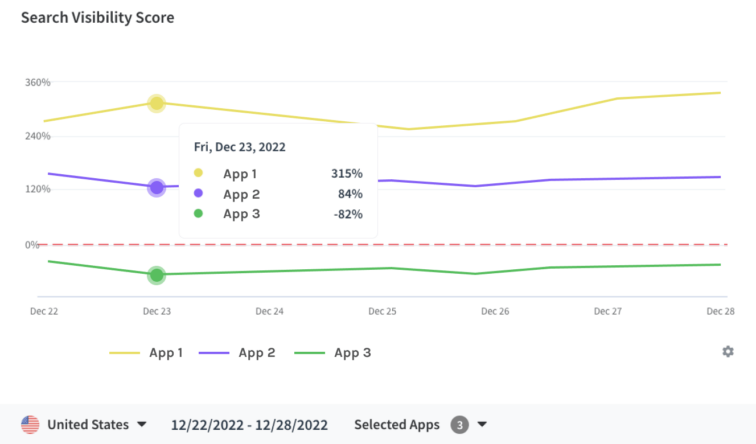
As a next step, check in App Radar’s App Timeline if your app competitors have made any changes to their metadata. Also, take a look at which keywords competitors are ranking on. If they took over some good positions that your app owned before, it could have increased their app visibility.
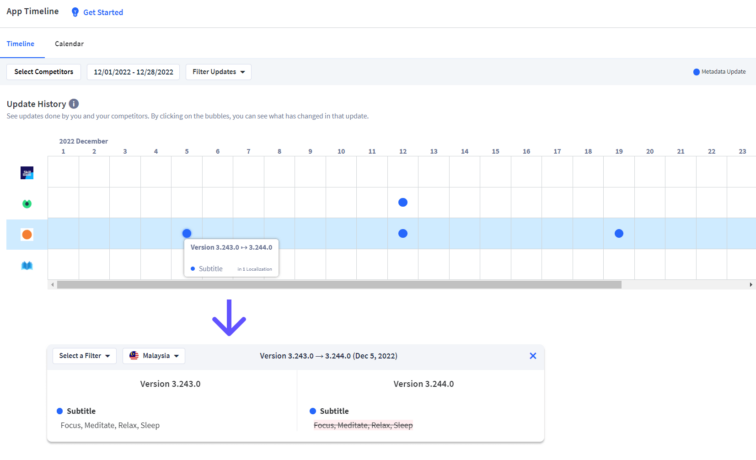
Summary
Since our latest release, we introduced the organic search visibility score in App Radar. In other words, you can now more efficiently solve the mystery of organic app visibility. This new feature in App Radar’s tool set is particularly helpful when you are evaluating your ASO results and looking to answer the following questions:
- Was your ASO update a success?
- Did your app localization efforts pay off?
- How much app visibility do you get through organic UA compared to competitors?
Interested to see how your ASO efforts are paying off? Try out Search Visibility Score at App Radar.
Latest Posts
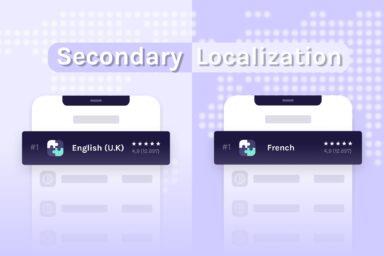
iOS App Product Page Localization: How to Use it the Right Way to Improve ASO
Top 10 Most Downloaded Games in Google Play Store (July 2025 Update)
Google Play Store Listing Experiments: How to Run Native A/B testing for Android Apps for Free!
12 Best Mobile Measurement Partners (MMPs) to Consider for Your Mobile App Attribution in 2025
Related Posts
